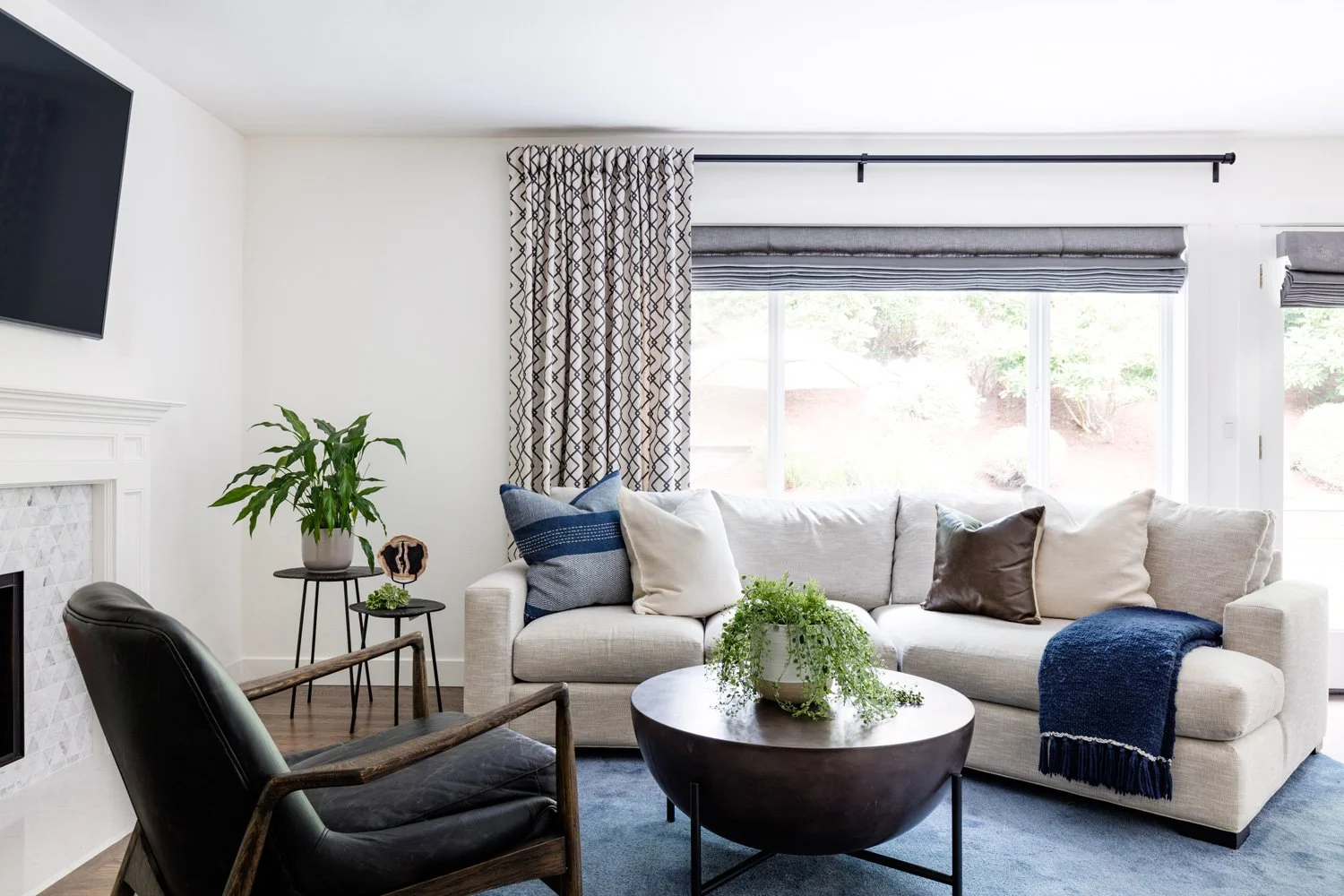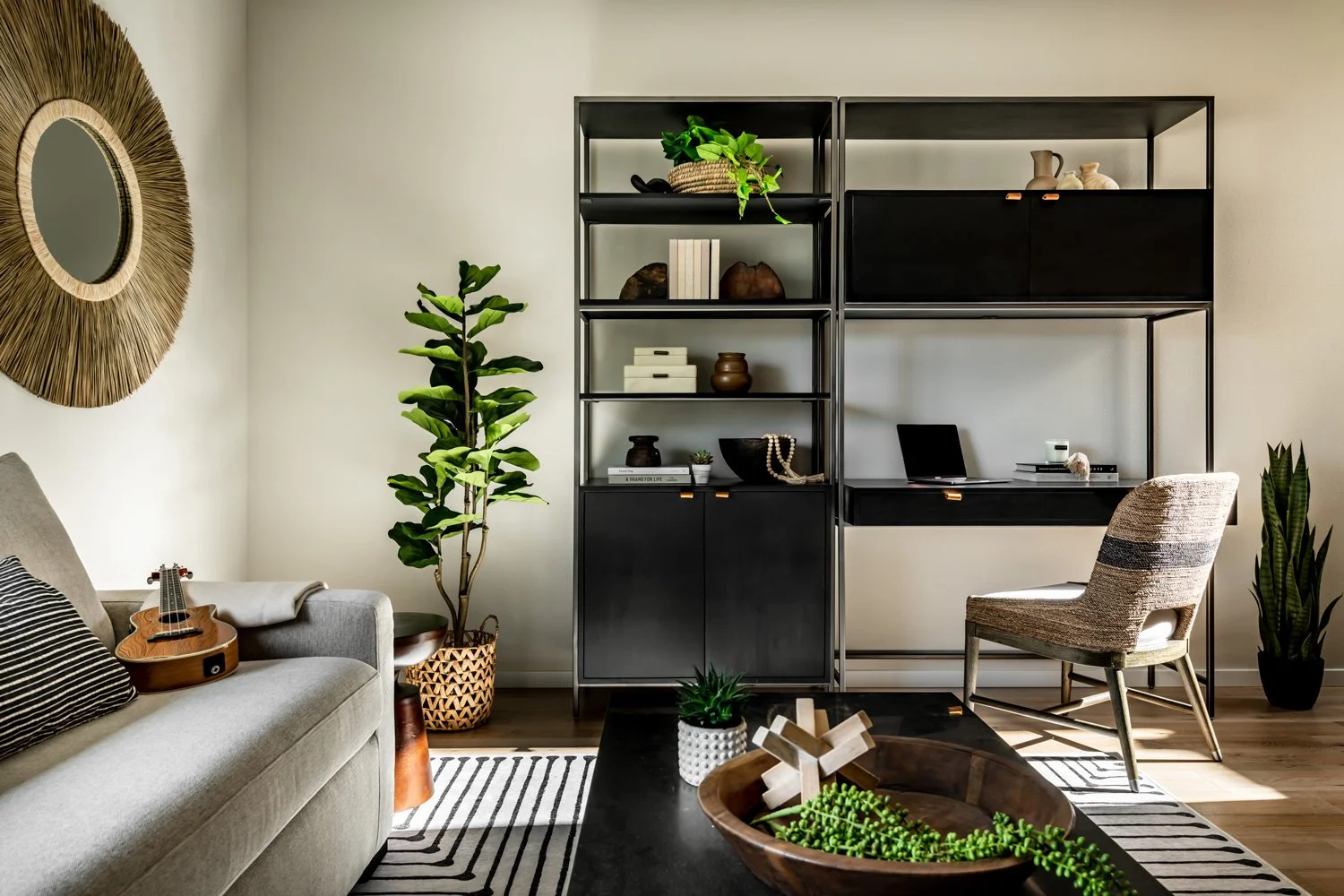Creating a Positive Feedback Loop in Your Home
Our homes are more than just a place to drop our stuff, put all of our things + lay our heads at night.
Home is our safe haven.
A place where we can unwind, recharge our batteries, and have deep meaningful connections with ourselves and those we care about.
And because home plays such a beautiful role in our lives, we should take the time to create it in such a way that it encourages a positive feedback loop for ourselves + our family. Creating space with intentionality that feels in alignment with our core values + the way we actually live.
We like to keep it real friend, not many in the industry are talking about home as a positive feedback loop, most of their focus is on selling the next furnishing or decorative accessory.
But at Elegant Simplicity, we believe home is everything you need + nothing more® so what does creating a positive feedback loop in your home even mean? And if you like the idea, how might you make it happen?
Well, let’s dive in then, shall we?
What Is A Positive Feedback Loop
A feedback loop is nothing more than a system where one thing happens in a specific way + because it happened, something else happens. Stick with us… In a positive feedback loop, an initial change in a system leads to further changes that often amplify the initial one, creating a cycle of continuous growth.
When it comes to our homes, creating a positive feedback loop means cultivating an atmosphere that not only makes us healthier and happier, but also increases our productivity and sense of accomplishment.
At Elegant Simplicity, this is where we come in — to accomplish this by designing + organizing our clients homes with intentionality. From our assessment together to determining functionality by looking at the routines that you have to curating design for your home with furniture + accessories that have deep meaning,
And what happens by virtue of taking the time to consider every aspect of our home in this way, is that home is now an environment that not only meets our basic needs for shelter or even comfort but actively contributes to our overall wellbeing, productivity and happiness.
If you’re still with us, then you’re going to love what’s next!
Routines That Nourish
Regardless of whether our routines involve self-care or activities with our family, our lives are defined by structure. We gain a sense of familiarity and comfort through the routines that we establish + then follow on a daily or weekly basis.
These routines are where we begin extracting what the functionality of a space needs to be + their a critical part of creating a positive experience (a feedback loop) in your home.
From a morning cup of coffee enjoyed in your favorite chair, a meditation or journaling practice from your office to routines like weekly family dinners or game nights. These routines create a rhythm to our day + provide opportunities for us to truly connect + relax.
Even not having a routine, is a routine. The key here is that we want our homes to nourish our daily-life, to be beneficial to our health and happiness.
Establishing Routines + Identifying Functionality
Identifying What Your Routines Are
The first step is to assess. Think about how you want your time at home to unfold.
What does waking up look like?
What do you do next?
And from there, consider every space in your home that you’re interacting with as you go throughout your day.
What are all the things that are needed in each space for you to find joy, happiness + use your home without friction?
Upholding Your Routines
The second step is to hold yourself accountable to the routine itself. Yes, doing what you say you’re going to do matters. But not because we say it matters.
It’s important because through the act of actually doing your routines, you cultivate the person + the family that you want to be + become.
Organizing For Functionality
The third step to establishing routines for a positive feedback loop in your home is to maintain a space where your routines can happen without friction. In other words, keep it organized *wink*
And this isn’t to be pushy, but the reality is that if you want your family to spend time together in the living room, then ensuring that everyone feels comfortable in that space and isn’t distracted or uneasy because things feel out of place is important.
Designing Spaces That Foster A Positive Feedback Loop
A well-designed space is not just aesthetically pleasing; it also supports our daily activities and lifestyle. Once you’ve established routines + organized your home, now we can turn our focus to ensure that the design itself nurtures you.
Because we’ve spent time up front, considering what routines you have + also getting those spaces organized. The function of each room is clear + we know it supports not only your lifestyle but what you truly need from your home.
Now, we can really turn our focus to the emotionality of the space.
For instance, a lot of our clients who work from home want an area that is not only clean but well-lit + inspiring, a space where they can focus to make themselves more efficient.
Some of our clients love to cook, so their kitchen needs to not simply look beautiful but consider the finest details to make cooking an experience they love, not a chore.
By creating spaces that cater to our needs and desires, we can enhance our daily experiences, leading to increased satisfaction and wellbeing.
Design Considerations For A Positive Feedback Loop In Your Home
A functional layout + activity zones.
Natural + artificial lighting.
Each of these elements significantly impacts your mood, wellbeing + can encourage a positive feedback loop in your home. But there’s more, friend.
Items that hold sentimental value can evoke positive memories and feelings, while sustainable or handmade items can make our routines more enjoyable.
By being a conscious curator in our homes, we can create an environment that continually reinforces positive feedback.
In other words, everything in our home should have meaning to us.
The Power of Nature + Biophilic Design
Biophilia means love of nature + we’re all about biophilic interior design.
As our world evolves further and further into technology, our work environments, our lifestyles in general + our homes disentangle from Mother Nature. Therefore, biophilic design integrates elements of the natural environment into the places we visit, work + where we live in an effort to bridge the gap. To reconnect us back with the positive impacts nature has on our health + wellbeing.
With this lens, another way to create a positive feedback loop in your home is by incorporating elements of nature. Now truth be told, this is exciting because there are a lot of design elements to consider, which is why we’d encourage you to check out our article about biophilic interior design.
That said, houseplants not only enhance the quality of the air we breathe but also lower levels of stress and improve mood.
Other natural materials such as wood and stone, the existence of large windows or even indoor water features can have similar effects.
The Benefits of a Positive Feedback Loop In Your Home
When you create a positive feedback loop in your home, you'll likely notice more than one significant benefit.
From feeling more relaxed and content in your home to being able to focus and be more efficient or to feel at ease + staying in a state of flow while cooking, reading etc.
The benefits of a positive feedback loop in your home aren’t merely a home that looks nice because it’s beautifully organized + well-designed but because it actually promotes meaningful connection.
By cultivating a positive feedback loop in your home, you're not simply bringing order to your physical environment; you're redefining with intentionality who you are + who you want your family to become.
You're creating a space that nurtures you, that uplifts you, that affords you deep meaningful interaction. A home that provides space to be efficient and productive but also moments for quiet contemplation.
Creating a positive feedback loop in your home is investing in your happiness and wellbeing. And there's no better investment than that.
If you haven’t already, check out our FREE video course: 4 Days To A More Beautiful + Functional Home and when you’re ready to begin your transformational journey — let’s chat.




